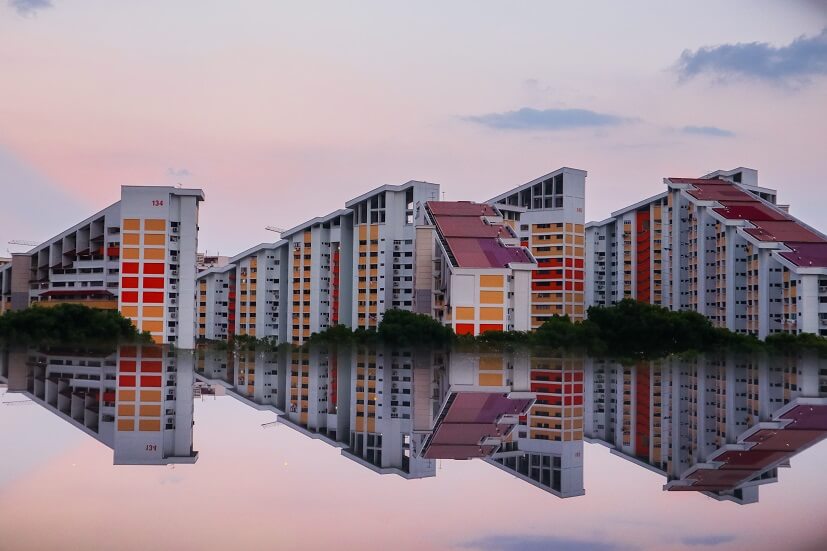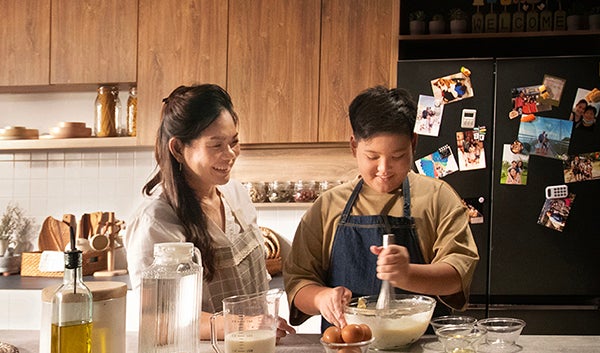Guide to buying a BTO flat in Singapore: Eligibility, How to Apply & Timeline (2025)
For many Singaporeans, buying a Build-to-Order (BTO) flat is a major milestone. After all, it’s usually the first home that you will be buying, and a major financial commitment.
Eligible buyers may apply for a flat during a sales exercise. Successful applicants will be invited to book a flat and then wait about three to five years for the flat to be built.
For beginners who are unsure of the requirements to buy a BTO flat, here’s a step-by-step guide on how to apply for one. Read on to find out more about the eligibility criteria, the application process, payment and timeline.
Are You Eligible to Apply for a BTO Flat?
You will only be able to apply for a BTO flat if you satisfy HDB’s eligibility criteria.
Here are the eligibility criteria for a BTO flat:
- As a family: Either with your spouse (including child/children if any), your parents, or if you are divorced person with legal custody, care, and control of your child
- As a fiancé/fiancée couple: You and your partner can apply if you have a joint income of no more than $14,000. At least one of you must be a Singapore Citizen. You will also need to submit a valid ROMM/ROM certificate to HDB within 3 months of collecting the keys to your new flat.
- As orphaned siblings: All siblings must be single, and listed in the same flat application, with no other separate flat applications. One of the deceased parents must be a SC or SPR
- As a single or up to four joint singles: You and all the other applicants must be 35 years old and above and applying for 2-room Flexi flat (on 99-year lease) in a non-mature estate only
- As a couple with a non-resident spouse: You must be at least 35 years old, and your non-resident spouse must hold a valid work pass or visit pass, and applying for 2-room Flexi flat on 99-year lease) in a non-mature estate only
There are also property and age requirements when applying for a BTO.
- You must not own or have disposed of any private property within the last 30 months before the HFE letter application.
- For all applicants, the proposed owner must be at least 21 years old or 35 years old if applying as a single.
In addition, all applicants and occupiers listed in the flat application must be at least a Singapore Citizen, and they must include at least one other Singapore Citizen or Singapore Permanent Resident if they are buying a flat with their family.
Applicants and occupiers listed in the flat application must also not own any other private properties (local or overseas) or have disposed of their private properties within the last 30 months.
The household must also fulfil the income ceiling requirements:
| Type of BTO flat | Applicants' combined average gross monthly income must not exceed: |
| 2-room Flexi | S$7,000 (on 99-year lease) or S$14,000 (for short-lease) |
| 3-room | S$7,000 or S$14,000 depending on project |
| 4-room or bigger | S$14,000 or S$21, 000 if purchasing with extended or multi-generation family |
How Much is a BTO Flat in Singapore?
The new flats are priced with a generous subsidy, taking into accounts factors such as location, flat attributes and prevailing market conditions.
To have an idea, you may refer to HDB’s press release for the recent December 2023 BTO flat prices.
CPF Housing Grants for BTO application
Depending on your eligibility, you can apply for the Enhanced CPF Housing Grant of up to S$80,000 to defray the cost of owning your own home.
How to Apply for a BTO Flat
Step 1: Check your eligibility and explore your housing loan options
You may use this e-Service to do a preliminary check on their eligibility by entering the details of all applicants and occupiers for the intended flat purchase.
With a budget in mind, it is easier to shortlist and pick a suitable flat. To do this, check your eligibility for a housing loan, either from HDB or a bank/Financial Institution.
Applying for a Housing Loan from HDB
As flat buyers, you can apply for an HDB housing loan if your average gross monthly household income does not exceed S$14,000. The loan amount granted to you will depend on several factors like HDB’s credit assessment, Loan-to-Value limit, the flat’s remaining lease, and other related HDB policies.
To find out your eligibility for an HDB housing loan, you may submit an application for the HDB Loan Eligibility (HLE) letter. You can apply for an HFE letter through the HDB Flat Portal. The HLE Letter will inform you of the amount of HDB housing loan that you are eligible for, the monthly instalment and repayment period, and other terms and conditions. If you intend to take an HDB housing loan, a valid HLE letter is required when you book a flat.
Applying for a Housing Loan from a Bank/Financial Institution
Besides an HDB housing loan, you can also finance your BTO flat purchase with a housing loan from a bank or financial institution. Bank loans may have lower interest rates but they tend to fluctuate along with market conditions.
If you are applying for a bank loan, the bank will issue an In-Principle Approval (if you have yet to book your flat) which provides a preliminary assessment of your housing loan eligibility, or a Letter of Offer (if you have already booked a flat).
Step 2: Check the sales launches
Armed with the knowledge of your financial situation, the next step is to decide which sales launches you and your partner or family members are interested in. A list of upcoming BTO sales launches can be found on the HDB InfoWEB. Sign up for the HDB eAlert Service to receive email and/or SMS notifications when there is a sales launch.
Apart from the BTO sales launches which are the main supply of new flats for sale, there is the Sale of Balance Flats (SBF) exercises which give you the opportunity to apply for balance flats from earlier BTO sales launches, surplus replacement flats offered under Selective En bloc Redevelopment Scheme (SERS), and repurchased flats.
If there are unselected flats from the SBF sales launches, they may be offered under the open booking of flats. For open booking of flats, you can apply for a flat online anytime and receive a queue number for flat booking on a first-come-first-served basis. You could even book a flat as early as the next working day, where possible.
It’s important to apply for a flat type you can comfortably afford. If you are a student or fresh graduate, it’s hard to say how much you’ll be earning in 4-5 years, when you need to start paying the mortgage. Be prudent in planning your flat purchase and ensure you don’t overstretch yourself financially.
Use These Home Purchase Calculators
Use the CPF Housing Loan calculator: To get a clearer picture of how much you need to pay for a BTO, use CPF’s First home calculator. This will give you an estimate of the home loans available to you based on you and your partner’s combined income.
Plan your finances and BTO payment timeline with HDB’s budget calculator: In addition to the CPF calculator, use HDB's budget calculator on the HDB Flat Portal. This tool helps you determine affordability by taking into account your income, potential grants, and estimated monthly repayments.
Additional Considerations for the Prime Location Public Housing (PLH) Model
You should be aware of the PLH model when you apply for a BTO flat. PLH flats are located in prime, central locations and come with stricter regulations. These include a longer Minimum Occupation Period (MOP) of 10 years and restrictions on resale. If you're considering a PLH flat, factor in these conditions and how they align with your long-term housing goals.
Step 3: Check Which Housing Grants You Qualify For
Once you know what housing loan amount you’re eligible to get, consider the housing grants you may qualify for and prepare the income documents required before your flat booking appointment. Currently, eligible first-timer applicants may apply for the Enhanced CPF Housing Grant of up to $80,000.
Note that if you are planning to take up an HDB housing loan, you must have a valid HLE letter when you book a flat unless you qualify for deferred income assessment.
If you and your partner are full-time students at the time of the flat application or have completed full-time studies or National Service within the last 12 months before the flat application and have booked an uncompleted flat, you may opt for deferred income assessment, where you may defer the income assessment for the application of EHG and HDB housing loan nearer to the collection of keys to the flat if one of you is 30 years old or below.
On the other hand, if you have booked a completed flat, the income assessment for the EHG and HDB housing loan will be carried out at the flat booking and loan application.
Do note that all housing grants will have to be refunded to your CPF account with interest when you sell your flat after meeting the minimum occupation period of 5 years.
Step 4: Apply for BTO flat online
When you’ve found a sales launch for your preferred location, it’s time to apply for a flat on HDB InfoWEB. You will have to pay a S$10 administrative fee each time you apply for a flat. This non-refundable fee can be paid by credit card or a QR code for mobile app payments.
After application, you can log in to My HDBPage which is a personalised portal to view all communications and transactions with the HDB at any time. The balloting outcome will be released in up to two months. You will then receive a queue number if your ballot has been successful.
Step 5: Book the flat and pay the Option Fee
After you apply for a BTO flat, you will be allocated a queue number based on balloting. The queue number will determine the order in which you may book a flat vis-a-vis the other applicants.
What to Expect:
- Oversubscription: BTO launches, especially in popular estates, may be oversubscribed. This means there are more applicants than available flats. If the demand is high, you might not be able to get your desired unit.
- Checking Your Queue Number: You can check your queue number online via the HDB Flat Portal. This usually happens a few weeks after the application period closes.
- Understanding Your Chances: HDB provides estimated selection chances based on your queue number and the flat supply. This gives you an idea of your likelihood of securing a flat in that particular launch.
Booking Your Flat
Once your queue number is called, you'll be invited to a flat booking appointment at HDB. This is where you get to select your desired unit from the available options.
When you head down to HDB for the flat booking appointment, you will have to pay the option fee, depending on the flat type:
| Flat Type | Option Fee |
| 4-room or bigger flat | S$2,000 |
| 3-room flat | S$1,000 |
| 2-room Flexi flat | S$500 |
You need to use NETS to pay the option fee. Make sure your daily transaction limit is not below the option fee amount before you attend your flat booking appointment.
You may also choose to opt in for the Optional Component Scheme (OCS) at the flat booking appointment if it is offered for your project, and the cost of the additional components will be added to your flat price.
Step 6: Sign the Agreement for Lease and pay the downpayment, stamp duty and legal fees
From six months after booking a flat, you will be invited to sign your Agreement for Lease and make your downpayment at the same time. If you are taking a bank loan, ensure that you have a valid Letter of Offer.
Here’s how much downpayment you will need to pay:
If you are taking an HDB housing loan, the downpayment is 10% of the purchase price when signing the Agreement for Lease. You can pay in cash, with your CPF savings, or Enhanced CPF Housing Grant (if eligible). The balance payment of 5% is to be paid during key collection.
For a housing loan from a bank/financial institution, you’ll need to pay 20% of the flat’s purchase price – 5% is payable in cash while the remaining 15% is payable in cash or CPF savings. As financial institutions may grant a maximum loan quantum of up to 75% of the purchase price, you will have to pay the balance 5% of the purchase price using cash or CPF savings when you collect the keys to your flat.
Staggered Downpayment Scheme
Are you or your partner under the age of 30, and at least one of you is a first-timer applicant?
If the answer is yes, you are eligible for the Staggered Downpayment Scheme if you have booked an uncompleted flat. This means you only need to pay half of the downpayment when you sign the Agreement for Lease. The remaining amount is paid during the keys collection for your new flat.
Here’s how much you need to prepare:
| Housing loan from HDB/ not taking any loan | Housing loan from Bank3 | ||
| Loan ceiling of 75% | Loan ceiling of 55% | ||
| 1st payment: Signing of Agreement for Lease | 5% using CPF Ordinary Account savings or cash | 5% in cash; 5% using CPF Ordinary Account savings or cash | 10% in cash |
| 2nd payment: Collection of keys | For flat applications received before 16 Dec 20211:
For flat applications received on or after 16 Dec 20212:
|
15% using CPF Ordinary Account savings or cash | 35% using CPF Ordinary Account savings or cash |
Table extracted from HDB InfoWEB
Other fees
There are also some payments you will have to make at this time, including legal fees, stamp duty and other administrative charges such as caveat fees and registration fees.
To check your stamp duty payable, use IRAS’s stamp duty calculator here. Expect to pay the following amount in cash or CPF savings:
- First $180,000: 1%
- Next $180,000: 2%
- Next $640,000: 3%
- Remaining amount: 4%
You will also need to pay legal fees for the flat purchase. Here’s what you can expect to pay in cash or CPF savings:
- First $30,000: $0.90 per $1,000
- Next $30,000: $0.72 per $1,000
- Remaining amount: $0.60 per $1,000
Step 7: Wait for your flat to be completed and collect your keys
Once your flat is completed and the keys are ready to be issued, HDB will notify you to collect your keys. Once there, you will have to pay the balance of the purchase price of the flat. Make sure your HLE Letter or Letter of Offer is valid for your housing loan to be disbursed.
If you applied for the flat under the Fiancé/Fiancée Scheme, you must solemnise your marriage within 3 months of collecting your keys. If your marriage was registered overseas, you need to submit a photocopy of your marriage certificate to HDB.
During key collection, you will also have to pay survey fees and premiums under the CPF Home Protection Scheme if you are using your CPF funds to pay your home loan instalments, and purchase fire insurance if you are taking an HDB housing loan.
Survey fees
When you collect your keys from HDB, you will have to pay survey fees regardless of whether you are taking up a bank loan or HDB loan.
The survey fees are dependent on your flat type, and subject to GST:
| Flat Type | Survey Fee (before GST) |
| 2-Room | S$150 |
| 3-Room | S$212.50 |
| 4-Room | S$275 |
| 5-Room | S$325 |
| Executive Flat | S$375 |
Table extracted from HDB InfoWEB
Home Protection Scheme and Fire Insurance
If you are using CPF savings to pay your monthly housing loan instalments, you need to be insured under the Home Protection Scheme (HPS), a mortgage reducing insurance scheme from the CPF Board that protects you and your loved ones from losing your HDB flat in the event of death, terminal illness, or total permanent disability. Your premium amount will depend on your age, gender, as well as your loan amount and declared percentage of coverage.
You are also required to purchase fire insurance from the HDB’s appointed insurer if you are taking an HDB housing loan. However, this insurance plan only covers building structures, fixtures and fittings provided by HDB. It does not include home contents such as furniture, renovations and personal belongings.
BTO Application Tips
Applying for a BTO flat can be a competitive process. Here are some tips to improve your chances of success:
Maximise Your BTO Eligibility with Priority Schemes
- Family and Parenthood Priority Scheme (FPPS): First-timer families with children or expecting a child get higher priority. This scheme boosts your chances in the ballot.
- Married Child Priority Scheme (MCPS): If you're married and want to live with or near your parents, this scheme gives you an advantage. However, be aware of the eligibility conditions and proximity reference—family members who helped you quality for the MCPS must live with you or within 4km of your new flat throughout the minimum occupation period, among others criteria.
- Multi-Generation Priority Scheme (MGPS): Allows parents and married children to apply for two units within the same BTO project, increasing the chances of living near each other.
Strategic Location Selection
- Non-Mature Estates: Generally, non-mature estates have lower application rates compared to mature estates. Consider applying to these areas for a higher chance of success. For example, recent BTO launches in Jurong West and Tengah have seen lower subscription rates compared to launches in Bidadari or Kallang/Whampoa.
- Balance Location and Preferences: While non-mature estates offer better odds, weigh this against your personal preferences for amenities, proximity to work, and future development plans.
Understand the BTO Process
- First-Timer Advantage: First-timer applicants have a higher chance of securing a flat. Make sure you understand the BTO requirements for first-timer status.
- Application Rates: Pay attention to the application rates for past BTO launches in your preferred locations. This gives you an idea of the number of applicants and helps you manage expectations.
Remember to stay updated on the latest HDB policies and announcements, as BTO eligibility criteria and schemes can change.
HDB BTO timeline: How Long Does the Entire BTO Flat Buying Process Take and Payment Milestones
All in all, the process will take about three to six years to complete. Here is an overview of the flat buying process with the full BTO payment timeline and key milestones, from the moment you decide to apply for a BTO flat until you collect your keys:
1. Application and Balloting (2 weeks - 2 months)
- Application: Submit your application during the launch period and pay the non-refundable application fee.
- Balloting: Await the ballot results and your queue number.
2. Flat Booking and Option Fee (4 weeks - several months after balloting)
- Flat Booking Appointment: Select your preferred unit based on your queue number.
- Option Fee: Pay the option fee to secure your flat. This contributes towards your down payment.
3. Signing the Agreement for Lease and Downpayment (Within 9 months of booking)
- Agreement for Lease: Sign the legal agreement with HDB.
- Downpayment: Pay the downpayment, which is typically 10% of the purchase price if you're taking an HDB loan.
- Staggered Downpayment Scheme: Eligible buyers can opt for this scheme, allowing them to pay the downpayment in two installments: 5% upon signing the Agreement for Lease and the remaining 5% when the flat reaches a certain construction stage. This can help ease the initial financial burden.
4. Construction and Progress Payments (3-5 years)
- Progress Payments: During the construction phase, you'll make progress payments based on the construction milestones of your flat. These payments are typically linked to your housing loan and are spread out over the construction period.
5. Key Collection and Final Payment (Upon completion)
- Final Payment: Make the final payment, which includes the remaining housing loan amount, stamp duty, and legal fees.
- Key Collection: Receive your keys and start your exciting journey as a homeowner!
So You’ve Successfully Bought a BTO Flat. What’s Next?
Buying a BTO flat is merely the first step of your home-ownership journey. Here’s what you should do next.
Have Sufficient Savings for Renovation
BTO flats require some basic renovations before they can be habitable, and you should be prepared to set aside $30,000 to $60,000 for renovations for a 4-room flat, depending on how elaborate your interior design is. To meet your savings goals, consider starting an insurance savings plan, like Income’s Gro Saver Flex Pro, that can help you grow your money over the next few years.
Protect Your Home with Home Insurance
HDB fire insurance only protects the structure of your house in the event of fire. Enhance your protection when you opt to insure your home with Income’s Enhanced Home Insurance.
Starting from $3/month, our insurance protects your content like furniture, personal belongings and more in your house and the renovation costs that you have invested in. Plus, the insurance help you return your home to its original state when the unexpected happens.
Once all that is settled, congratulations! You’re officially a homeowner!
1 LTV limit for HDB housing loan at 90%
2 LTV limit for HDB housing loan at 85%
3 For new flats booked before 6 Jul 2018, LTV limit for housing loans from FIs were 80% or 60%. The minimum payment required during collection of keys are:
- 10% using CPF Ordinary Account savings or cash, if LTV limit is 80%
- 30% using CPF Ordinary Account savings or cash, if LTV limit is 60%
This article is meant purely for informational purposes and does not constitute an offer, recommendation, solicitation or advise to buy or sell any product(s). It should not be relied upon as financial advice. The precise terms, conditions and exclusions of any Income Insurance products mentioned are specified in their respective policy contracts. Please seek independent financial advice before making any decision.
These policies are protected under the Policy Owners’ Protection Scheme which is administered by the Singapore Deposit Insurance Corporation (SDIC). Coverage for your policy is automatic and no further action is required from you. For more information on the types of benefits that are covered under the scheme as well as the limits of coverage, where applicable, please contact Income Insurance or visit the GIA/LIA or SDIC websites (www.gia.org.sg or www.lia.org.sg or www.sdic.org.sg).
This advertisement has not been reviewed by the Monetary Authority of Singapore.








